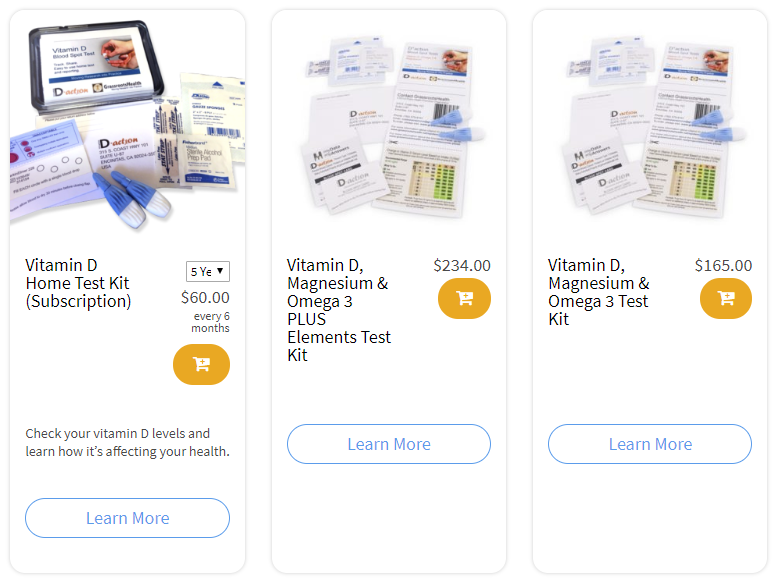Published on July 20, 2020
In our last post, we discussed the numerous health benefits of omega-3 fatty acids and the association between a higher Omega-3 Index and incidence of cardiovascular events and overall mortality. While it is possible to achieve the recommended Omega-3 Index of at least 8% through diet alone, many people do not consume enough or even any fatty fish, and instead choose to take supplements as their source of omega-3 fatty acids.
 But how much do you need, and how can you tell if you are getting enough omega-3s? Similar to vitamin D, there is a wide variation in how an individual’s Omega-3 Index responds to the amount of omega-3 fatty acids they consume (this will be discussed in more detail in an upcoming post). Below, we illustrate how much omega-3 fatty acids may be needed to reach a target level.
But how much do you need, and how can you tell if you are getting enough omega-3s? Similar to vitamin D, there is a wide variation in how an individual’s Omega-3 Index responds to the amount of omega-3 fatty acids they consume (this will be discussed in more detail in an upcoming post). Below, we illustrate how much omega-3 fatty acids may be needed to reach a target level.
Amount of EPA+DHA needed to achieve an Omega-3 Index of 8%
In November of 2019, GrassrootsHealth published a paper that assessed the EPA+DHA intake requirement to achieve an Omega-3 Index of 8% or higher, the optimal level for health, using YOUR omega-3 data. This analysis found that among the 265 participants who reported no fatty fish intake (to ensure no major sources of EPA+DHA input beyond supplements), ~1,300 mg/day of EPA+DHA was needed for 50% of the population to achieve an Omega-3 Index of 8%. Approximately 1,900 mg/day of EPA+DHA was needed for 90% of the population to achieve an Omega-3 Index of 8%.
We ran this analysis again, with almost twice as many participants, and found the EXACT SAME results: ~1,300 mg/day of EPA+DHA was needed for 50% of the population and ~1,900 mg/day was needed for 90% of the population to achieve and Omega-3 Index of 8%.
Finding the exact same results with almost twice as many participants shows that these intake amounts are consistent and reliable.
Importance of Testing Your Omega-3 Index
It is important to point out that these intake amounts are averages and there is a large amount of variability in the omega-3 status for different people with the same intake amount (this topic will be covered in more detail shortly). For example, our initial analysis showed that the range of response with 1000 mg of EPA+DHA per day was 5.7% to 10.2%. This large amount of variability is similar to what we have observed for vitamin D. Therefore, we recommend that individuals measure their Omega-3 Index and determine a personalized dose. Check out our Omega-3 calculator to help you determine the estimated dose needed for you to reach your desired Omega-3 Index.
Are You Getting Enough Vitamin D to Help Yourself?
We’re in a time of great crisis that could be greatly affected by making sure you and everyone you know has a serum level of at least 40 ng/ml. Help us help you.
Do you know what your vitamin D level is? Be sure to test today to find out, and take steps to keep it within a target of 40-60 ng/ml or 100-150 nmol/L! Give your immune system the nutrients it needs to support a healthy you and protect yourself from unnecessary diseases.
GrassrootsHealth Nutrient Research Institute is preparing to do a Community RCT with the use of our myData-myAnswers nutrient health system that over 15,000 people are already using for their health. We will demonstrate how one can use the Nutrient Research Model established by Dr. Robert Heaney to establish the effect of vitamin D serum levels of at least 40 ng/ml (100 nmol/L) on risk reduction with different ethnicities in the population. Please let us know if you’re interested in helping sponsor this project.
CLICK HERE for updates and new information about the project.
Through GrassrootsHealth Nutrient Research Institute, you can also test your essential elements magnesium, copper, zinc and selenium, toxins such as lead, mercury and cadmium, as well as your omega-3 levels, inflammation levels and thyroid stimulating hormone (TSH) level. Find out your levels today! Log on to the test selection page (click the link below) to get your tests and see for yourself if your levels can be improved.
Make sure you track your results before and after, about every 6 months!
Click Here to Access the Test Page
How can I track my nutrient intake and levels over time?
To help you track your supplement use and nutrient levels, GrassrootsHealth has created the Personal Health Nutrient Decision System called
For each specific supplement, you can track what days you take it, how much, and many other details. This will help you know your true supplemental intake and what patterns of use work for you to reach and maintain optimum nutrient levels. Check it out today!









